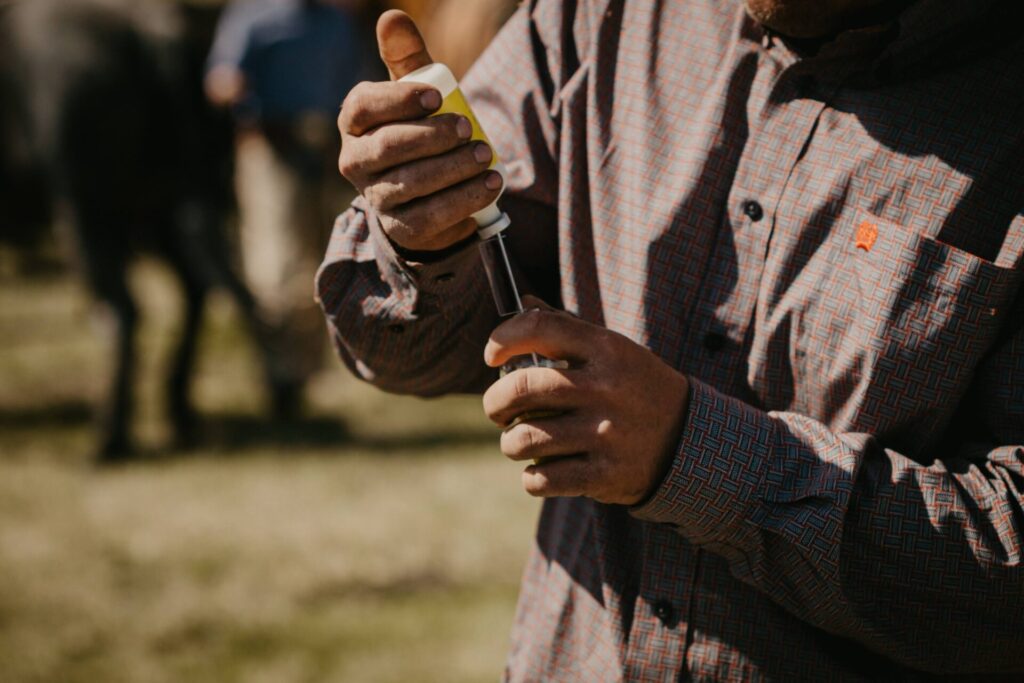A Better Vaccine for Bovine TB
Titre de Projet
Testing the Protective Efficacy and DIVA (Differentiate Infected From Vaccinated Animals) Potential of MSX-I in a Pre-Clinical Mouse Model of Bovine Tuberculosis (TB)
Des Cherchers
Dr. Jeffery Chen - University of Saskatchewan [email protected]
Sheila Tan, CFIA
| Le Statut | Code de Project |
|---|---|
| Terminé en April, 2025 | POC.26.23 |
Background
Bovine tuberculosis (bTB) is a reportable disease that not only affects a variety of livestock, including cattle, and wildlife species but can be transmitted within and between these populations. While bTB in Canadian cattle is typically rare, cases are still observed across the country with the most recent being in late November-early December of 2024. While there is a vaccine called BCG available, it is only used in humans and for certain wildlife species. BCG is not permitted for livestock in Canada due to its causing of false positive results in the bTB diagnostic test (tuberculin skin test).

As of today, testing and culling of infected herds is the only way to manage the disease once it is confirmed. While this internationally recognized approach has helped to safeguard Canada’s bTB-free status and our ability to trade internationally, these control measures are very costly to the producers affected as well as the federal government. However, the MSX-1 vaccine, could be an effective alternative. While the currently used BCG vaccine is based on a weakened form of the bTB bacteria (M. bovis), MSX-1 is based on a very different and harmless mycobacteria (M. smegmatis) that could provide protection without impacting the ability to test for bTB or causing any negative side effects.
Objectives
Using the mice model of bTB, we will evaluate if:
- The MSX-1 live vaccine can effectively prevent bovine tuberculosis (bTB) infection
- It can provide protection without interfering with the tuberculin test, which is currently used to diagnose bTB
What they Did
Two trials were conducted to validate that MSX-1 is an effective bTB vaccine candidate for Canadian cattle herds. In both, groups of mice were vaccinated with either unmodified M. smegmatis or its equivalent, MSX-1 version 1, MSX-1 version 2 (modified strain of version 1), the currently available BCG vaccine, BCG-ESX-1 (modified BCG) or saline (mock vaccine).
In trial #1, mice from each group were selected at 13-, 26- and 46-days post-vaccination, their spleen cells (enriched in T-cells) were isolated and treated with tuberculin to see if they are sensitized to M. bovis antigens (tuberculin) and EsxA. If sensitized, tuberculin and EsxA would cause increased production of an immune-signaling protein called interferon-gamma, similar to what happens in the skin test. 47-days post-vaccination, the remaining mice were infected with 100 virulent M. bovis cells/mouse and monitored for survival. This portion was completed to evaluate if MSX-1 prevents death from M. bovis infection and if its use will allow differentiation of infected from vaccinated animals (DIVA) unlike BCG.
In trial #2, mice were vaccinated as in trial # 1 and infected on day 45 post-vaccination with 10 M. bovis cells/mouse and monitored. 30 days later, the mice were euthanized, organs isolated and the M. bovis in them quantified. This portion was completed to understand how well MSX-1 controls M. bovis growth in mice.
What They Learned
This team found that only spleen cells from mice vaccinated with BCG and BCG-ESX-1 produced increased amounts of interferon-gamma, which reflects sensitization to the bTB skin test. There was no increase in interferon-gamma production in spleens of mice vaccinated with unmodified M. smegmatis, MSX-1 (version 1), MSX-1 (version 2) and saline. This confirmed their earlier observations that vaccination with MSX-1 does not sensitize mice to tuberculin and therefore, testing for bTB in vaccinated animals is still plausible. However, while100% of the mice vaccinated with BCG and BCG-ESX-1 survived exposure to the active disease, only 80% of mice vaccinated with MSX-1 (version 1) survived after infection with virulent M. bovis.
When it comes to the burden of M. bovis infection in the primary (lungs) and secondary organs (spleen) of infection in mice, BCG, BCG-ESX-I, and MSX-I prevented the growth of virulent M. bovis in these organs significantly more so than MSX-I (version 2), M. smegmatis and saline.
What This Means
While the MSX-I was successful in providing enhanced protection against highly virulent M. bovis in mice, it was not as adept at providing total protection like the BCG vaccine (80% survivability vs. 100% survivability). However, MSX-I did not impact the ability to test for bTB in infected mice. This means that there could be a vaccine with the potential to be approved to protect Canadian cattle herds from tuberculosis while still allowing the ability to test which could mean culling only infected animals rather than the whole herd meaning cost savings for cattle producers, the beef industry and the government. There are also implications to further vaccinate wildlife, other livestock and humans with this development.
Further research into dosage, and length of protection will help to improve the efficacy of the MSX-I vaccine and potential approval of use.